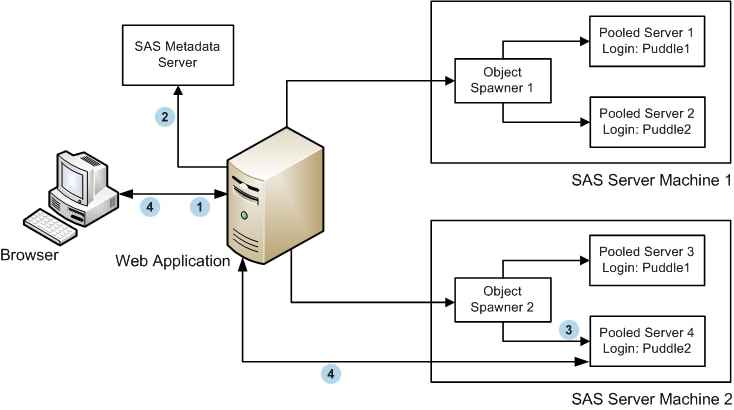Understanding the Client-side Pooling Connection Process
The Connection Process for a Client-side Pooled Server

The following process describes how a user retrieves and
uses a client-side pooled connection: